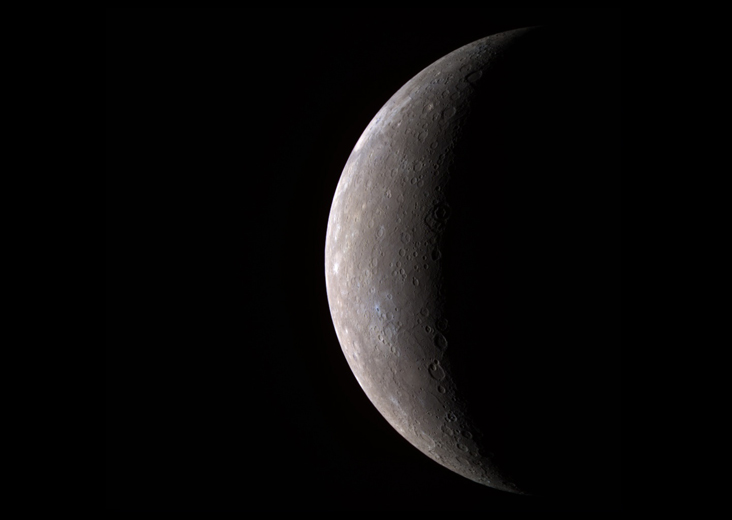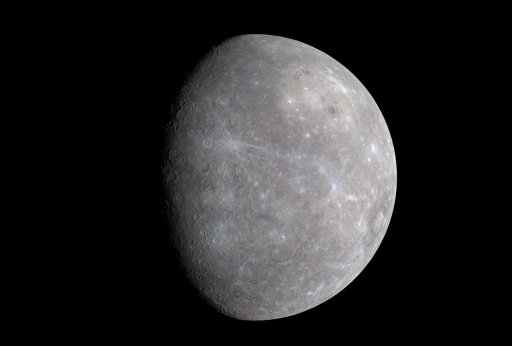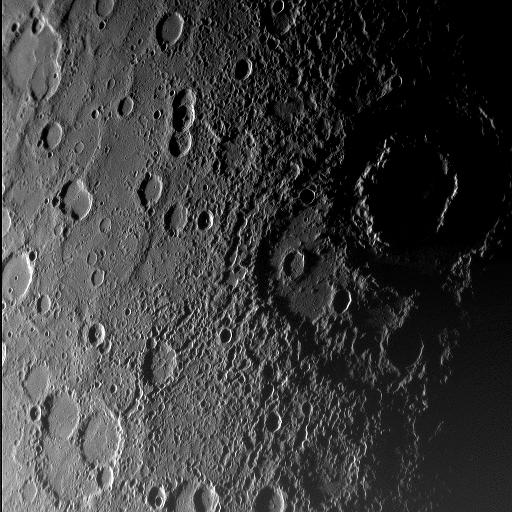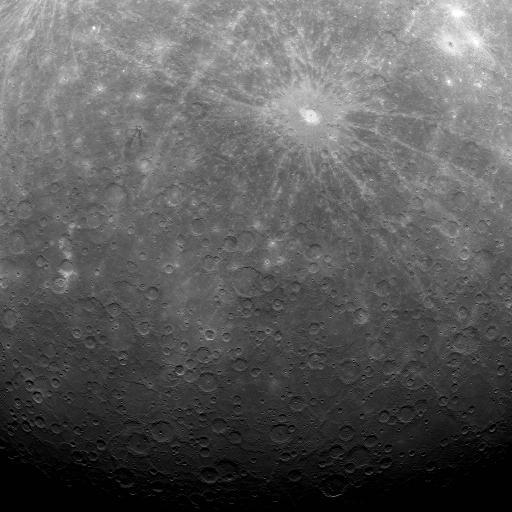Intro
As the smallest and closest planet to the Sun, Mercury has various features that cause its cratered surface, high density, and unpredictable climate.

Size & Scale
Mercury is the smallest planet in the solar system, with a radius of about 1500 miles. Mercury is the densest planet in the solar system, with a heavily metallic core making up 80% of the entire planet.
Mercury is also the closest planet to the sun. Throughout its orbit, Mercury’s distance from the sun ranges from 47 million kilometers to 70 million kilometers (29-43 million miles). If you were standing on the surface of the planet, the sun would appear about three times larger than it does on Earth. Due to the close proximity to the sun, Mercury completes an orbit around the sun every 88 days. One day on Mercury would be about 176 days on Earth.

Environment/Terrain
Mercury does not have an atmosphere, rather, a thin exosphere created by solar winds blasting off atoms that then strike microscopic meteoroids. The pressure caused by solar radiation causes those atoms to drift off into space, and as the planet speeds through its orbit, the atoms travel behind, forming a “tail”. Due to this lack of atmosphere, Mercury’s sky is consistently black, whether the sun is visible or not. Mercury also is known to have “magnetic tornadoes”, which are caused when the surface magnetic field mixes with the solar wind magnetic field. When they collide, they funnel hot wind plasma down to the surface, which then burst into rings off of the surface.
Mercury’s surface highly resembles the surface of Earth’s moon; it is full of craters and basins formed throughout the planets existence. The Caloris Basin, diameter of 1550 km, and Rachmaninoff, diameter of 306 km, are the most well known impact basins on the surface of Mercury.
Mercury, being only on average 60 million kilometers from the sun, and not having an atmosphere to retain heat, has extreme temperature changes between night and day. The temperature ranges from -180 degrees Celsius and 430 degrees Celsius (-290-800 degrees Fahrenheit).

Orbiting Bodies
Mercury does not currently have any known natural satellites.

History
Going back to 1631, Mercury was first observed with a telescope by Thomas Harriott and Galileo Galilei. However, Mercury is one of the few planets that can be seen in the night sky, so the initial discovery of Mercury is unknown, as it has been charted in ancient cultures, dating back thousands of years. The planet was named after the Roman god, Mercury, the god of commerce. Mercury is the Roman version of the Greek god Hermes, the messenger.

Missions
In the years 1974-1975, Mariner 10 became the first spacecraft to visit Mercury. While in orbit, it photographed about half of Mercury’s surface through a period of three flybys. Mercury’s MESSENGER became the second spacecraft to visit Mercury in 2008-2009, and observed Mercury through three flybys. In 2011, MESSENGER began it’s orbital mission around Mercury, and ever since then, it has been collecting extensive amount of data and images, bring about new discoveries and answers to many questions about the existence of Mercury.
